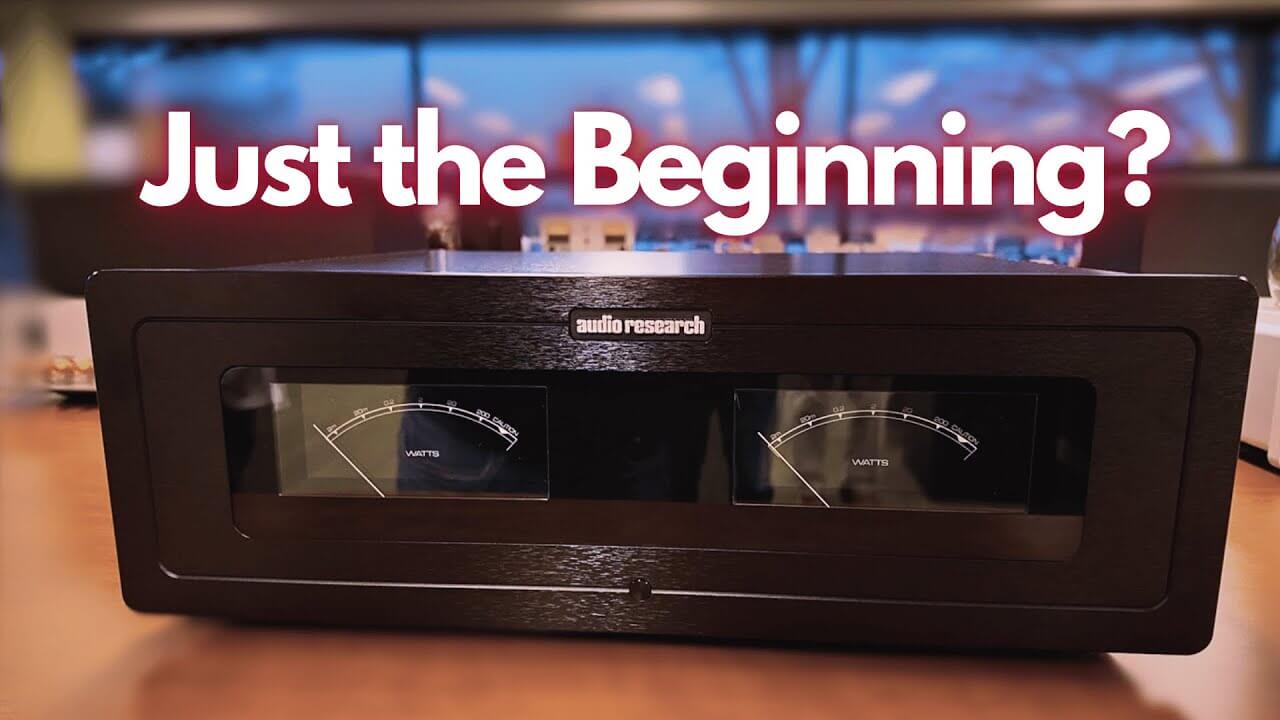
The Ultimate Review of Baetis Reference 4 Mingo+ Computer Music Server
The Ultimate Review of Baetis Reference 4 Mingo+ Computer Music Server
Experience the unparalleled performance of the Baetis Reference 4 Mingo+ music server, a game-changer for audiophiles seeking exceptional sound quality.
Introduction to Baetis and John Mingo
I once had the pleasure of fishing with John Mingo, the founder and designer of Baetis Audio products. My friend and I traveled to the stunning Paradise Valley in Montana, renowned for its pristine streams, creeks, and rivers perfect for trout fishing. Mingo's presence there was no accident; he was not only a passionate audiophile but also a PhD economist with a rich history, including two stints at the Federal Reserve. The lean septuagenarian was an expert fly fisherman, having published three books on the subject. The name Baetis, by the way, refers to the mayfly, a trout's favorite snack.
On that fishing trip, John brought along a lawn chair to relax in the shade by the stream, about ten yards away from the water.
A Lesson in Patience
Now, I must admit, I’m not the best angler. I struggle with my back cast; my line often ends up snagged in the leaves behind me. John, with increasing urgency, yelled from the shore, “Stop! Just stop!” His face flushed with intensity, a reminder that patience is key—something I needed to heed.
The Baetis Experience Begins
Months later, I received a Baetis server for review, and I can practically hear Mingo's voice in my head. One of his pet peeves was audiophiles rushing into setting up his products without assistance or reading the owner’s manual. When I opened the sturdy cardboard box, I found an 8 ½” by 11″ sheet of paper taped to the server with one simple word printed in large letters: “STOP.” My heart raced as I was transported back to that fishing trip.
Mingo didn’t tolerate foolishness—especially when it came to tech-savvy audiophiles. He realized that this trait was costing him sales, so he hired Joe Makkerh in Montréal to handle training and customer service. This strategic move allowed Baetis to earn a reputation for delivering superb-sounding digital players and unparalleled technical support. After Mingo retired in 2017, he sold the company to Makkerh, who now serves as the chief designer and CEO.
Baetis Audio continues to offer three tiers of players: Prodigy, Revolution, and Reference models. Following Mingo's passing in late 2022, it was fitting to name their most advanced product after him—the Baetis Reference 4 Mingo+ music server.
Meet the Team Behind Baetis
Joe Makkerh has a wealth of knowledge regarding computer systems and collaborates closely with two talented young engineers. One is Padli Lumsden, who holds a background in engineering physics and is responsible for designing and refining many essential components within Baetis systems. The other is Brian Williams, who began working for Makkerh at just 16 years old. Williams not only assembles all the Baetis systems but also installs the necessary software for users. For the Reference 4 Mingo+ Edition music and media server, Williams has contributed significantly to two innovative features that dramatically affect sound quality and user-friendliness.
Linux vs. Windows: The Operating System Debate
While Baetis can build a Reference 4 Mingo+ with a Windows operating system, they prefer to manufacture it with a Linux OS. Linux is known for its open-source nature, allowing developers to modify the code to suit their needs. Makkerh proudly describes the Linux-based server as “lean and mean” and “more appliance-like.” It’s user-friendly, stable, and secure, minimizing the chances of technical issues and making software updates a breeze. The Mingo+ operates in a “headless” way—meaning it doesn’t require a monitor, keyboard, or mouse. Instead, users control the server through the Roon app and the Baetis Remote module within the Unified Remote mobile app.
Connectivity and Features
The Reference 4 Mingo+ boasts an impressive array of connectivity options. A high-quality AES/EBU input is standard, and customers receive the top USB output from JCAT in the form of the USB Card XE Evo. JCAT cards are manufactured in Canada for a Polish company and have won Makkerh’s admiration. For those looking for a more budget-friendly option, a plain Reference Mingo is available without a USB audio interface.
For multichannel enthusiasts, HDMI output is included, as well as various enhanced video options for those who plan to use their Baetis for both music listening and movie-watching. Achieving this requires a Windows operating system. The proprietary daughterboard, a staple of Baetis servers since the company’s inception, galvanically isolates and significantly reduces noise for both SPDIF RCA and AES/EBU pathways. Additionally, an audiophile-grade JCAT XE network card—externally powered via a DC cable—comes standard.
The Reference 4 Mingo+ also includes a massive HDPLEX 300W linear power supply with multiple taps to power the main computer and USB/network cards. Inside, a 4TB solid-state drive and 64 gigabytes of DDR4 RAM are complemented by Revelation Audio Labs cryo-silver internal wiring. Customers have the option to add an optical CD-ripping disk drive for an additional $100.
Aesthetically, buyers can choose between silver or black finishes for the faceplate of the unit’s black case. There’s also a mid-size enclosure available at a lower cost, and the signatures of John Mingo and Joe Makkerh are laser-etched onto the back of the top plate for a special touch.
The Ordering Process
Acquiring a Baetis media player starts with a phone call or email to Joe Makkerh. Although a small network of dealers exists, around 95% of Baetis purchases are direct sales. Makkerh works closely with customers to finalize the specifications for their units. Since each machine is custom-built, the typical turnaround time is three to four weeks from order to delivery. Generally, Roon music management software is pre-installed, but Baetis is pleased to load in other programs like JRiver at the buyer’s request.
Before shipment, customers receive two short videos tailored to their specific purchases. The first video explains “What’s-in-the-box,” while the second provides instructions for the online meeting to set everything up. This might seem a bit overboard for tech-savvy audiophiles, but it’s comforting to be addressed by the designer of your media computer.
Upon receiving the player, a one-to-two-hour remote session is scheduled with Joe Makkerh to ensure the owner can operate the new component effectively. An “EDID video dongle,” about the size of a USB flash drive, is inserted into the HDMI or DisplayPort, allowing the team in Canada to remotely configure the Baetis within the customer's music system. Customers also provide temporary access to their tablet or phone running the Unified Remote app, making the setup process simple and straightforward.
If any technical issues arise, support is readily available, usually at no charge. Makkerh is a patient and gifted teacher who adjusts to each customer’s level of computer experience.
Listening to the Baetis Reference 4 Mingo+
I substituted the Baetis Reference 4 Mingo+ for my everyday digital file player, the Reference 3B, after nearly four years. During stereo playback, I paired it with a Tidal Audio Contros DAC/preamplifier, Tidal Ferios monoblocks powering Magico M2 speakers, and a Magico S-Sub. I used Siltech 880 series balanced interconnects and speaker cables, along with Wireworld Platinum (AES/EBU) and Cableless (USB) digital cables. For multichannel audio, the Mingo+ fed data via HDMI to an Anthem AVM 70 processor.
Having used various Baetis Audio products for over a decade, I've observed incremental improvements among models from both the Revolution and Reference lines. The Reference 4 Mingo+ Edition represents a significant leap compared to earlier designs.
During my comparisons between the Reference 3B and Reference 4 Mingo+, the metric that truly showcased their differences was resolution. It wasn't just about the musical detail, but an enhanced understanding of rhythm, space, timbre modulation, and dynamics—the essence of what makes music feel real to attentive listeners. Listening with the new Baetis felt like putting on a new pair of eyeglasses—clearer, sharper, and vastly improved.
Critical Listening Experiences
Using the Reference 4 Mingo+, I found a range of enjoyable experiences:
- Darius Milhaud’s Scaramouche: The clarity was striking; it became evident that two pianos were playing instead of one. The syncopated rhythm of the final movement, “Brazileira,” was brilliantly articulated.
- Anthony McGill’s Brahms Clarinet Sonatas: Every subtle nuance of dynamics and tone color was pronounced, enhancing the beauty of McGill's performance, especially with Qobuz streaming.
- Bonnie Raitt’s “Storm Warning”: The background harmonies had a palpable organic quality, showcasing the collaborative effort of the four singers behind Raitt's emotive lead.
- Bernard Haitink’s Shostakovich Symphony No. 15: The very first note, played on orchestral bells, reverberated with clarity and depth, making the music feel alive.
- James Levine’s Brahms Requiem: The immersive listening experience transported me back to the Symphony Hall, rekindling memories of the performance.
These observations were made using an AES/EBU connection from Baetis to my DAC. While there are advantages to USB connections, particularly for high data rates and native DSD files, the improvement of switching from the Baetis Reference 3B to the Reference 4 Mingo+ was far more profound.
Multichannel Experience and Audiophile Concerns
The benefits of using the Mingo+ extended into multichannel audio setups as well. I connected the Mingo+ to my Anthem using a Transparent Audio HDMI cable, and the interplay across channels was captivating. For those curious about Dolby Atmos, Makkerh and Williams have devised a way to deliver immersive MKV files from an external hard drive to the Anthem processor through the Mingo+.
Despite the advanced technology, many audiophiles—especially those of a certain age—are hesitant about embracing "computer audio." This reluctance is understandable, given the frustrations that can come with IT-related issues. However, Baetis Audio has crafted a product that excels in sound quality and offers an ease of use and customer support that mitigates many of these concerns.
Could you simply play music from your cellphone and call it a day? Sure, but trust me, you wouldn’t want to. Don’t even think about it. Just stop.
Specs & Pricing
Inputs/outputs: One proprietary BNC or RCA SPDIF, one proprietary AES/EBU, one audiophile USB (JCAT XE Evo) with USB 3.0 and 2.0 compatibility, one HDMI 2, one DisplayPort, four USB 3.0
Connectivity: Ethernet (externally powered JCAT), WiFi
Dimensions: 17″ x 4.625″ x 14.5″
Weight: 23 to 25 lbs., depending on options
Price: $14,500 (black or silver, full-size case), as reviewed
BAETIS AUDIO
27 Redpath Place
Montreal QC H3G1E2
Canada
(888) 357-0035
If you're ready to enhance your music experience, shop your favorite album cover poster at our store here.
 | DISCOUNTGET 30% OFF*Use code on your next order:
|
* This post may contain affiliate links, meaning we earn a commission if you make a purchase through these links, at no additional cost to you.






